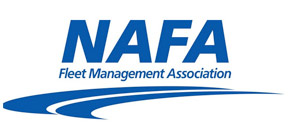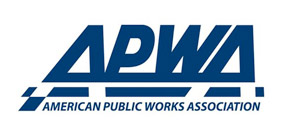Assistant Fire Marshal Matt O’Daniel: Teaching fire safety through weekly walkabouts

Years ago, the city of Lynchburg, Va., started a program called “After the Fire.” If there was a fire in a neighborhood, particularly if someone was injured or killed, the fire department would canvas the neighborhood, speak to all the neighbors about fire safety and install smoke alarms if needed.

Assistant Fire Marshal Matt O’Daniel began to think it would be an even better idea to talk to neighborhoods before a fire happened. Fire service intern Natalee Coates, who has been working with the department for two years, helped develop the idea, and the weekly walkabout was implemented.
The weekly walkabout was a chance to expand another program the department already had in place. In the beginning, O’Daniel explained, it began by choosing neighborhoods that had the greatest number of fire occurrences. While the department still uses that data, O’Daniel also wanted to ensure other neighborhoods were not left out.
“We want to include everyone in the program,” he assured. “The goal is to make sure every home in the city has working smoke alarms.”
The department’s data analyst looks at last year’s fire run responses to suggest certain neighborhoods that should be focused on for future walkabouts.
O’Daniel has participated in just about every weekly walkabout. The neighborhood campaigns are planned for eight weeks during the spring and eight weeks during the fall. Grids are chosen for the comfort of those doing the walkabouts, so they are not walking for hours in the heat of summer or cold of winter.
“We get out, meet people and get to know neighborhoods and a good idea of the layout of the homes in that neighborhood in case there is an emergency,” he explained. “It’s a good training tool and a good community relations tool.”
The department typically sets aside two to three hours for a walkabout and breaks into three groups of three or four firefighters, each canvassing a different block of the neighborhood. Each of the areas is mapped out and assigned: If one group is called out on an emergency, then O’Daniel has the group document where they left off so another group can finish the route.
“One thing we’ve learned and will hopefully start implementing is documenting what houses we’ve been to where the person wasn’t home,” O’Daniel mentioned. “We leave an information packet on the door, but we don’t document if the person wasn’t home. I want that information so we can go back and check in on that person.”
The department chooses different days and times of day for the weekly walkabouts to try to reach as many people as possible. While on the walkabout, the groups will talk to families about the importance of fire safety, identify fire hazards and install free smoke alarms if needed.
In the last year, O’Daniel has also been working closely with the Red Cross to include its representatives on the weekly walkabouts. After reaching out to the Red Cross and sharing the fire department’s walkabout program, the Red Cross agreed to provide the free smoke alarms. Red Cross volunteers are at each walkabout, joining a group and assisting the fire department with paperwork.
“Lots of people know we give out free smoke alarms now,” he stated. “We tell them, ‘If you have any friends, neighbors or family who need working smoke alarms, have them call and schedule a free smoke alarm install outside of the regular walkabout times.’”

Coates is currently working on operating guidelines to share with other departments on how to do a walkabout, as part of a legacy project through the Bonner Leader program – a Corella and Bertram Bonner Foundation initiative that originally led to her involvement with the project. It will offer a standard operating procedure that can be expanded and personalized for each department. She is working with O’Daniel to come up with guidelines, and they will present the idea at the Student Scholar Showcase this year. O’Daniel hopes to see it spread throughout the state of Virginia and even across the nation.
O’Daniel has held the title of assistant fire marshal since 2008. Prior to that, he was assigned to Station 7 and primarily rode the ladder truck and rode along on the fire engine and medic unit. His entry into the fire marshal role came when he signed up for a fire investigator class: He enjoyed the class and during that time, a fire inspector class opened up. Shortly after, an opening occurred in the fire marshal office.
He decided to take a shot and was chosen to join the fire marshal office. After two years he went to a law enforcement academy for fire marshals, which, he explained, is the normal progression for fire marshals in Virginia.
As a fire inspector, he uses his first visit to businesses as a teaching tool.
“On a basic level, it is teaching fire safety,” he said. “I come in and tell people I will point out some fire code violations. I use it as a learning and educational experience to show people the importance of fire safety.”
Prior to beginning his career with the fire department, O’Daniel had plans to become a history teacher. He was history major in college and, simultaneously, a volunteer firefighter: He wanted to work more extensively with the fire department, but at the time he was not getting many calls to come to work.
He was in regular communication with the fire chief, though, and let him know he was set to graduate college in May 2001. He received a call from the chief, who scheduled him to go get a physical. He started with the department in June 2001. “In a way, I still am a teacher,” O’Daniel said, “just not history. It’s fire codes and fire safety. Instead of high school students, it’s people of all ages throughout the city.”
Next Article: More than Mayberry: a small town with a big reputation


